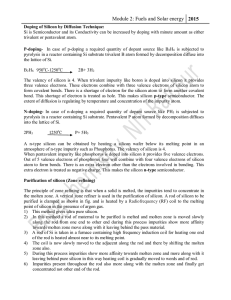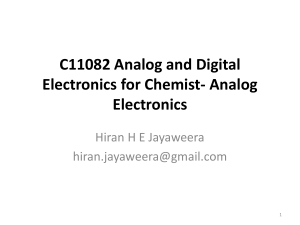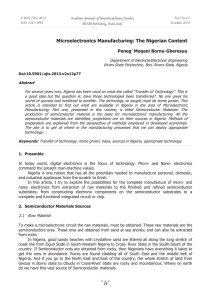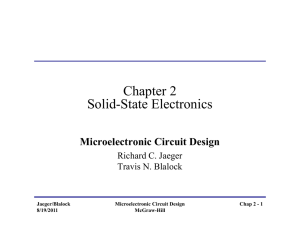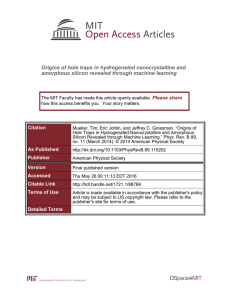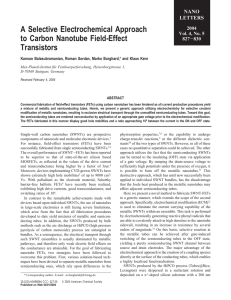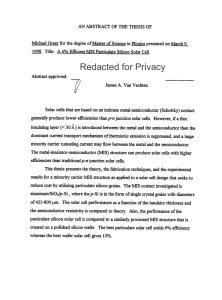26-5,6,7,8,9
advertisement
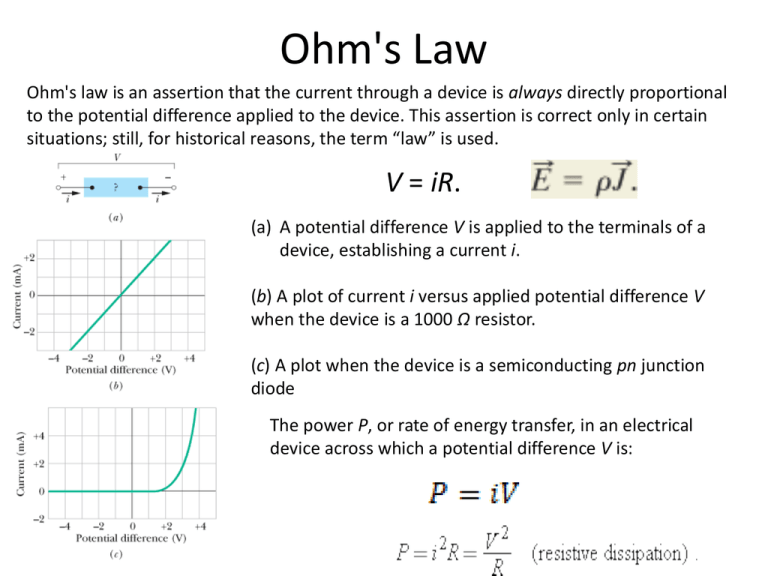
Ohm's Law Ohm's law is an assertion that the current through a device is always directly proportional to the potential difference applied to the device. This assertion is correct only in certain situations; still, for historical reasons, the term “law” is used. V = iR. (a) A potential difference V is applied to the terminals of a device, establishing a current i. (b) A plot of current i versus applied potential difference V when the device is a 1000 Ω resistor. (c) A plot when the device is a semiconducting pn junction diode The power P, or rate of energy transfer, in an electrical device across which a potential difference V is: Pure Silicon Semiconductors Semiconducting devices are at the heart of the microelectronic revolution that ushered in the information age. Pure silicon has such a high resistivity that it is effectively an insulator and thus not of much direct use in microelectronic circuits. However, its resistivity can be greatly reduced in a controlled way by adding minute amounts of specific “impurity” atoms in a process called doping. n-type semiconductor: (b) One silicon atom is replaced by a phosphorus atom (valence = 5). The “extra” electron is only loosely bound to its ion core and may easily be elevated to the conduction band, where it is free to wander through the volume of the lattice. P-type semiconductor: (c) One silicon atom is replaced by an aluminum atom (valence = 3). There is now a hole in one of the covalent bonds and thus in the valence band of the sample. The hole can easily migrate through the lattice as electrons from neighboring bonds move in to fill it. Here the hole migrates rightward. p-n Junction diode Semiconductor Technology p-n-p Transistor semiconducting chip Computers and other electronic devices employ thousands (if not millions) of transistors and other electronic components, such as capacitors and resistors. These are not assembled as separate units but are crafted into a single semiconducting chip, forming an integrated circuit with millions of transistors and many other electronic components. Superconductivity The best of the normal conductors, such as silver and copper, cannot become superconducting at any temperature, and the new ceramic superconductors are actually good insulators at room temperature.




